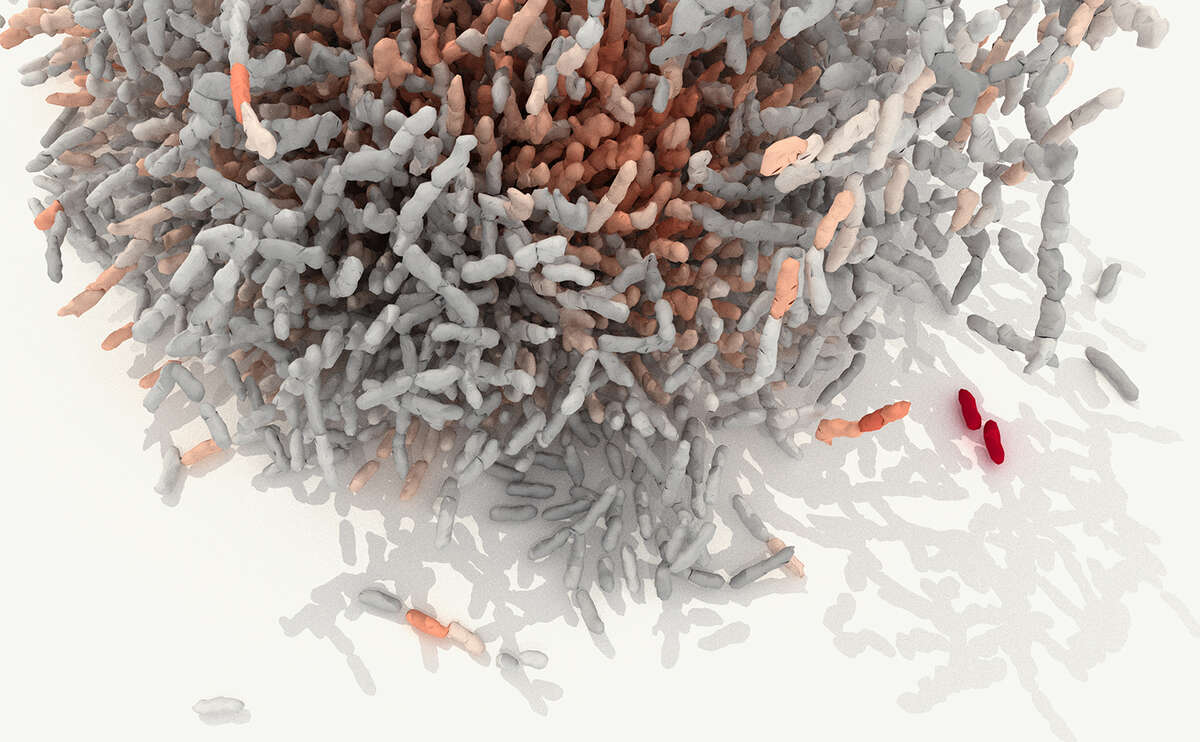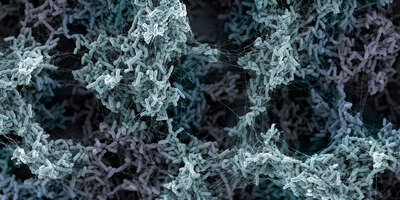Main Content
Physical mechanisms in bacterial multicellular development
We investigate the physical and biological processes that determine the dynamics of bacteria in communities, by focusing on community development and the emergent properties of communities during environmental perturbations.
Bacterial communities
Bacterial biofilms are surface-associated assemblages of bacterial cells that are now considered to be the most abundant form of microbial life on Earth. Biofilms also commonly cause chronic infections, and the cells inside biofilms display a much higher tolerance against antibiotics compared with isolated single cells. Obtaining a basic understanding of dynamical processes in biofilms is critical to be able to ultimately interfere with biofilm formation for technological and medical applications. More generally, bacterial biofilm communities and bacterial swarms are also simple model systems for studying fundamental aspects of multicellular organization and development.
Bacterial biofilm and swarm development
We investigate how bacterial multicellular structures, such as biofilms and swarm, emerge in time and space. A particular focus is to identify cellular interactions that take place during development, and how they influence the community development.
Emergent functions and multicellular properties of biofilms and swarms
To understand why bacteria form multicellular structures, such as biofilms and swarms, we investigate the emergent properties and functions that these systems display, e.g. during the response to stresses like phages, antibiotics, or immune cells. Understanding the benefits that these multicellular structures provide for bacterial cells promises new paths to be able to prevent or interfere with bacterial communities.




